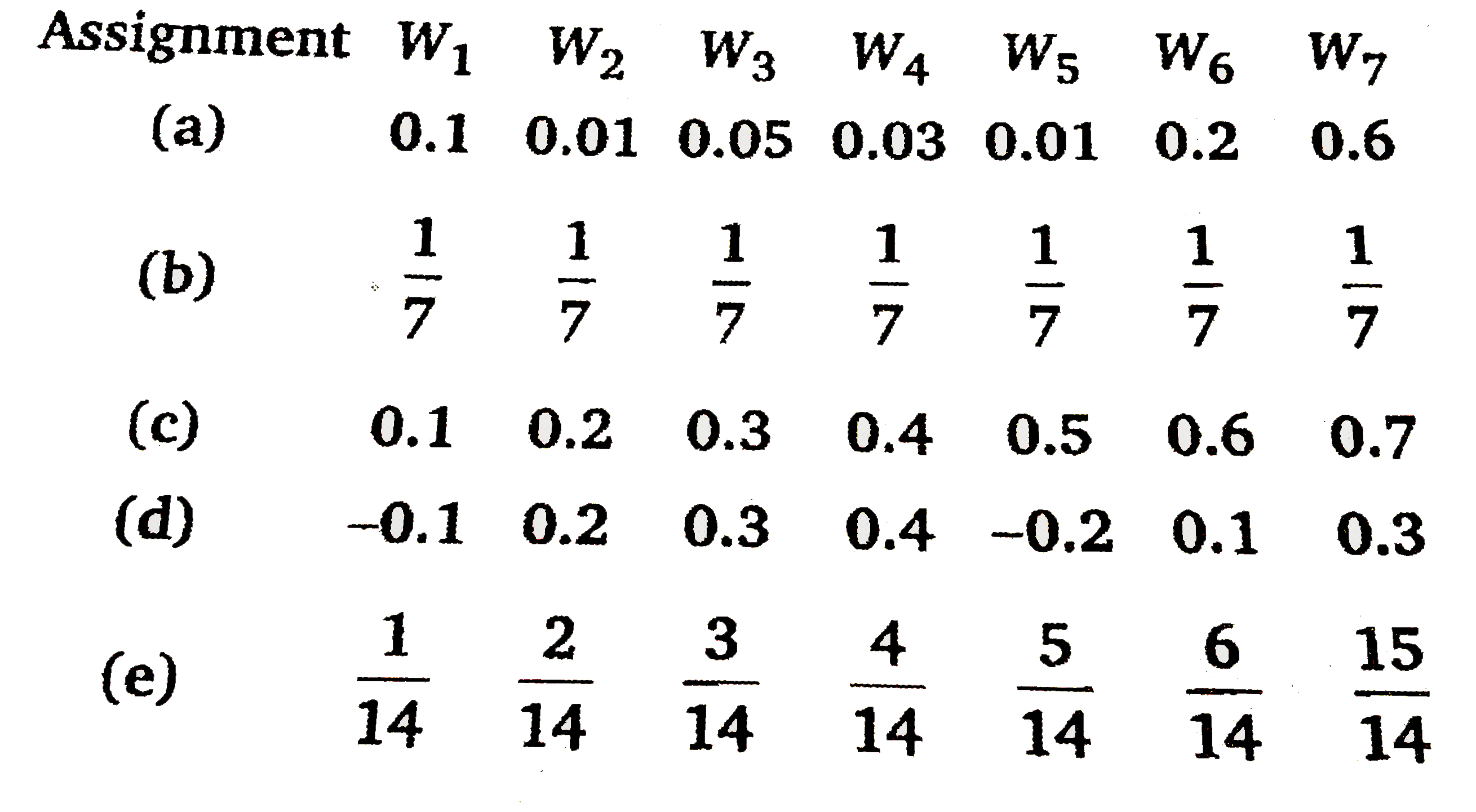Find→a.→b, When→a=ˆi+ˆj−2ˆk and →b=3ˆi+2ˆj+ˆkSolution in Tamil
The elements of A are all multiples of 5. Sum of every pair of elements of A is divisible by 5. Therefore, we have to find the probability that B has two distinct elements whose sum is divisible byy 3.
Let A0 be the set of elements of A of the form 3k, i.e., {0, 15, 30, ..., 195}, A1 be the set of elements of A of the form 3k + 1, i.e., {10, 25, ..., 190}, A2 be the set of elements of A of the form 3k + 2, i.e., {5, 20, 35, ..., 185}. Then n(A0) = 14, n(A1)=n(A2)=13.
If B has at least two elements from A0, then we are done.
If B contains at most one element of A0, then it must have at least one element from each of A1 and A2 for which the sum of these two elements will be divisible by 3. So, the required probability is 1.
Topper's Solved these Questions
- PROBABILITY I BOOK - CENGAGECHAPTER - PROBABILITY I EXERCISE - Solved Example
1 Videos
- PROBABILITY I BOOK - CENGAGECHAPTER - PROBABILITY I EXERCISE - Exercise 9.1
6 Videos
- PROBABILITY AND STATISTICSBOOK - CENGAGECHAPTER - PROBABILITY AND STATISTICSEXERCISE - Question Bank
24 Videos
- PROBABILITY IIBOOK - CENGAGECHAPTER - PROBABILITY IIEXERCISE - JEE Advanced Previous Year
25 Videos
Similar Questions
There are two bags each containing 10 books all having different titles but of the same size. A student draws out books from the first bag as well as from the second bag. Find the probability that the different between the books drawn from the two bags does not exceed 2.
View SolutionWhich of the following cannot be valid assignment of probabilities for outcomes of sample space S={W1,W2,W3,W4,W5,W6,W7}

View SolutionIf two events A and B are such that P(Al)=0.3, P(B)=0.4 and P(A∩Bl)=0.5, then P(BA∪Bl) equals
View SolutionA signal which can be green or red with probability 45and15 respectively, is received by station A and then and 3 transmitted to station B. The probability of each station receiving the signal correctly is 34 If the signal received at station B is green, then the probability that the original signal was green is (a) 35 (b) 67 (c) 2023 (d) 920
View SolutionLet →a=ˆj−ˆk and →c=ˆi−ˆj−ˆk . Then vector →b satisfying →a×→b+→c=→0 and →a.→b=3 is (1) 2→i−→j+2→k (2) ˆi−ˆj−2ˆk (3) ˆi+j−2ˆk (4) −ˆi+ˆj−2ˆk
View SolutionFind the volume of the parallelepiped whose coterminous edges are represented by the vectors: →a=2ˆi+3ˆj+4ˆk,→b=ˆi+2ˆj−ˆk,→c=3ˆi−ˆj+2ˆk →a=2ˆi+3ˆj+4ˆk,→b=ˆi+2ˆj−ˆk,→c=3ˆi−ˆj−2ˆk →a=11ˆi,→b=2ˆj−ˆk,→c=13ˆk →a=ˆi+ˆj+ˆk,→b=ˆi−ˆj+ˆk,→c=ˆi+2ˆj−ˆk
View SolutionIf →a=ˆi+ˆj+2ˆk and →b=3ˆi+2ˆj−ˆk, find the value of(→a+3→b). (2→a−→b).
View SolutionIf vec(a) = 3 hat(i) + 2 hat(k) , vec(b) = 3hat(j) - hat(k) and vec(c ) = hat(i) + hat(j) + hat(k) . Find ( vec(a) xx vec(b)). vec(c ) .
View SolutionFind the unit vectors perpendicular to both →a and →b when
(i) →a=3ˆi+ˆj−2ˆk and →b=2ˆi+3ˆj−ˆk
(ii) →a=ˆi−2ˆj+3ˆk and →b=ˆi+2ˆj−ˆk
(iii) →a=ˆi+3ˆj−2ˆk and →b=−ˆi+3ˆk
(iv) →a=4ˆi+2ˆj−ˆk and →b=ˆi+4ˆj−ˆk
View SolutionIf →a=ˆi+ˆj−ˆk,→b=2ˆi−2ˆj+ˆkand→c=3ˆi+2ˆj−2ˆk show that ,
→a.(→b+→c)=→a.→b+→a.→c
View SolutionIf →a=ˆi−ˆj,→b=ˆj−ˆk,→c=ˆk−ˆi then find [→a−→b,→b−→c,→c−→a]
View SolutionFind [→a,→b,→c] if →a=ˆi−2ˆj+3ˆk, →b=2ˆi−3ˆj+ˆk and →c=3ˆi+ˆj−2ˆk.
View SolutionConsider the vectors →a=ˆi+3ˆj+ˆk and →b=2ˆi−ˆj−ˆk.
(i) Find →a.→b
(ii) Find the angle between →a and →b.
View SolutionIf →a=ˆi+2ˆj−3ˆk and →b=3ˆi−ˆj+2ˆk, then →a+→b and →a−→b are
View SolutionFind →a.→b , when (i) →a=ˆi−2ˆj+ˆk and →b=4ˆi−4ˆj+7ˆk (ii)→a= ˆj+2ˆk and →b = 2ˆi+ˆk (iii) →a=ˆj−ˆk and→b= 2ˆi+3ˆj−2ˆk
View SolutionFind [→a→b→c], when (i)→a=2ˆi−3ˆj,→b=ˆi+ˆj−ˆk and →c=3ˆi−ˆk (ii)→a=ˆi−2ˆj+3ˆk,→b=2ˆi+ˆj−ˆk and →c=ˆj+ˆk
View Solution
